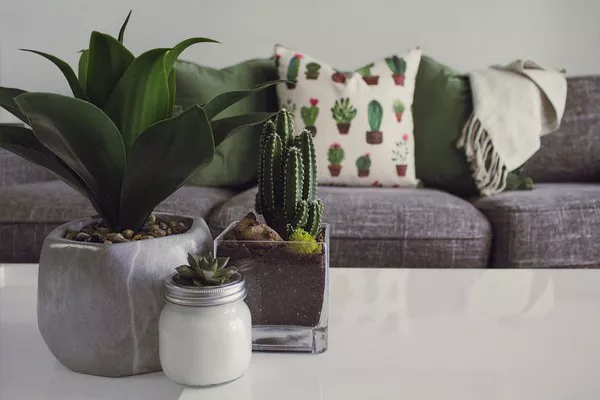In recent years, indoor plants have gained popularity not only for their aesthetic appeal but also for their potential health benefits, particularly their ability to purify the air we breathe. Among these plants, the Jade Plant (Crassula ovata) has often been touted as an effective air purifier. However, is there scientific evidence to support this claim, or is it merely a myth propagated by enthusiasts? In this article, we delve into the research to determine whether Jade Plant lives up as an air purifier and explore its other benefits for indoor environments.
The Myth of Jade Plant as an Air Purifier
The idea that certain houseplants, including the Jade Plant, can effectively purify indoor air traces back to a landmark NASA study conducted in the late 1980s. This study aimed to identify plants capable of removing common indoor pollutants, such as formaldehyde, benzene, and trichloroethylene, from the air. While the study did find that certain plants could remove these pollutants to some extent, the conditions under which they were tested were quite specific and not entirely reflective of typical indoor environments.
Understanding the Limitations
It’s essential to understand the limitations of the NASA study and subsequent research when assessing the air-purifying capabilities of Jade Plant. Firstly, the study was conducted in controlled environments, such as sealed chambers, where pollutant levels were artificially elevated. This setting does not necessarily mirror real-life indoor conditions where air circulation, humidity levels, and pollutant sources vary widely.
Secondly, while the study identified several plants capable of removing pollutants, including formaldehyde and benzene, the effectiveness of each plant varied. Moreover, the study primarily focused on volatile organic compounds (VOCs) commonly found in building materials, furniture, and cleaning products. Other indoor pollutants, such as particulate matter and biological contaminants, were not extensively studied.
Scientific Evidence on Jade Plant’s Air Purifying Abilities
Despite its widespread reputation as an air purifier, scientific evidence supporting Jade Plant’s efficacy in removing indoor pollutants is limited. While the plant may possess some ability to absorb certain VOCs, such as formaldehyde, studies specifically evaluating its air purifying capabilities are scarce.
One study published in the Journal of American Society for Horticultural Science in 2019 examined the ability of various houseplants, including Jade Plant, to remove formaldehyde from indoor air. The researchers found that while Jade Plant exhibited some capacity to absorb formaldehyde, its effectiveness was relatively low compared to other plants tested.
Another study conducted by researchers at the University of Georgia investigated the ability of different indoor plants to remove benzene from the air. The study found that while some plants showed promise in benzene removal, including Peace Lily and Gerbera Daisy, Jade Plant’s efficacy was minimal in comparison.
Benefits Beyond Air Purification
While Jade Plant may not be a powerhouse when it comes to air purification, it offers several other benefits that make it a valuable addition to indoor spaces.
1. Aesthetics: With its vibrant green leaves and striking appearance, Jade Plant adds a touch of beauty to any room. Its compact size and low maintenance requirements make it an ideal choice for both novice and experienced plant enthusiasts.
2. Stress Reduction: Numerous studies have demonstrated the stress-relieving benefits of indoor plants. The presence of greenery, such as Jade Plant, can help create a calming environment and improve overall well-being.
3. Indoor Air Quality: While Jade Plant may not be the most effective air purifier, it still contributes to indoor air quality by increasing oxygen levels and reducing carbon dioxide. Additionally, plants help regulate humidity levels, creating a more comfortable indoor environment.
4. Feng Shui: In traditional Chinese culture, Jade Plant is believed to bring prosperity and good luck when placed in the home or workplace. Its round, coin-shaped leaves symbolize wealth and abundance, making it a popular choice for those seeking to enhance positive energy flow.
See Also: How Many Different Succulents Are There?
Tips for Growing a Healthy Jade Plant
Whether you’re drawn to Jade Plant for its purported air purifying abilities or its aesthetic appeal, proper care is essential to ensure its health and longevity. Here are some tips for growing a thriving Jade Plant:
1. Light: Place your Jade Plant in a location where it receives bright, indirect sunlight for several hours each day. Avoid exposing it to direct sunlight, as this can cause leaf burn.
2. Watering: Jade Plant is drought-tolerant and prefers dry soil between waterings. Allow the soil to dry out completely before watering, and avoid overwatering, as this can lead to root rot.
3. Soil: Use a well-draining potting mix formulated for succulents or cacti. Avoid heavy soils that retain moisture, as they can cause root rot.
4. Temperature and Humidity: Jade Plant thrives in moderate temperatures between 65°F and 75°F (18°C to 24°C) and can tolerate low humidity environments.
5. Pruning: Regular pruning helps maintain the shape and appearance of your Jade Plant. Remove dead or yellowing leaves, as well as any leggy growth, to encourage bushier growth.
Conclusion
While Jade Plant may not be the air purifying powerhouse that some claim it to be, it still offers numerous benefits for indoor environments. Its aesthetic appeal, stress-reducing properties, and contribution to indoor air quality make it a valuable addition to any home or office space. By understanding its care requirements and appreciating its unique qualities, you can enjoy the beauty and benefits of Jade Plant for years to come.


